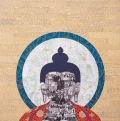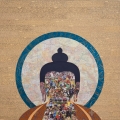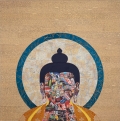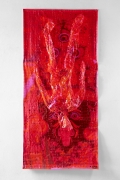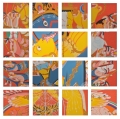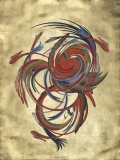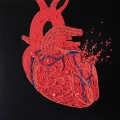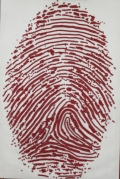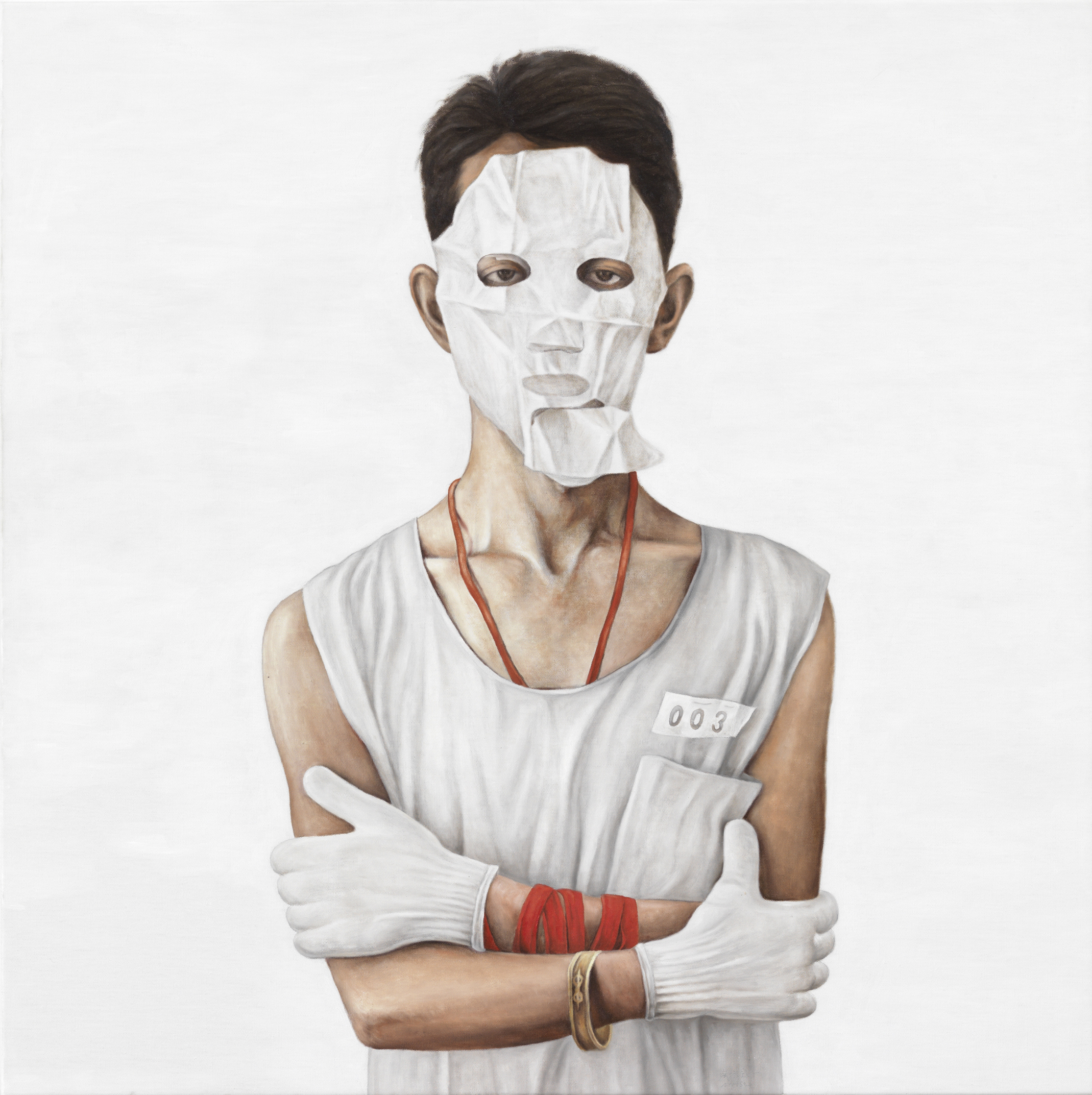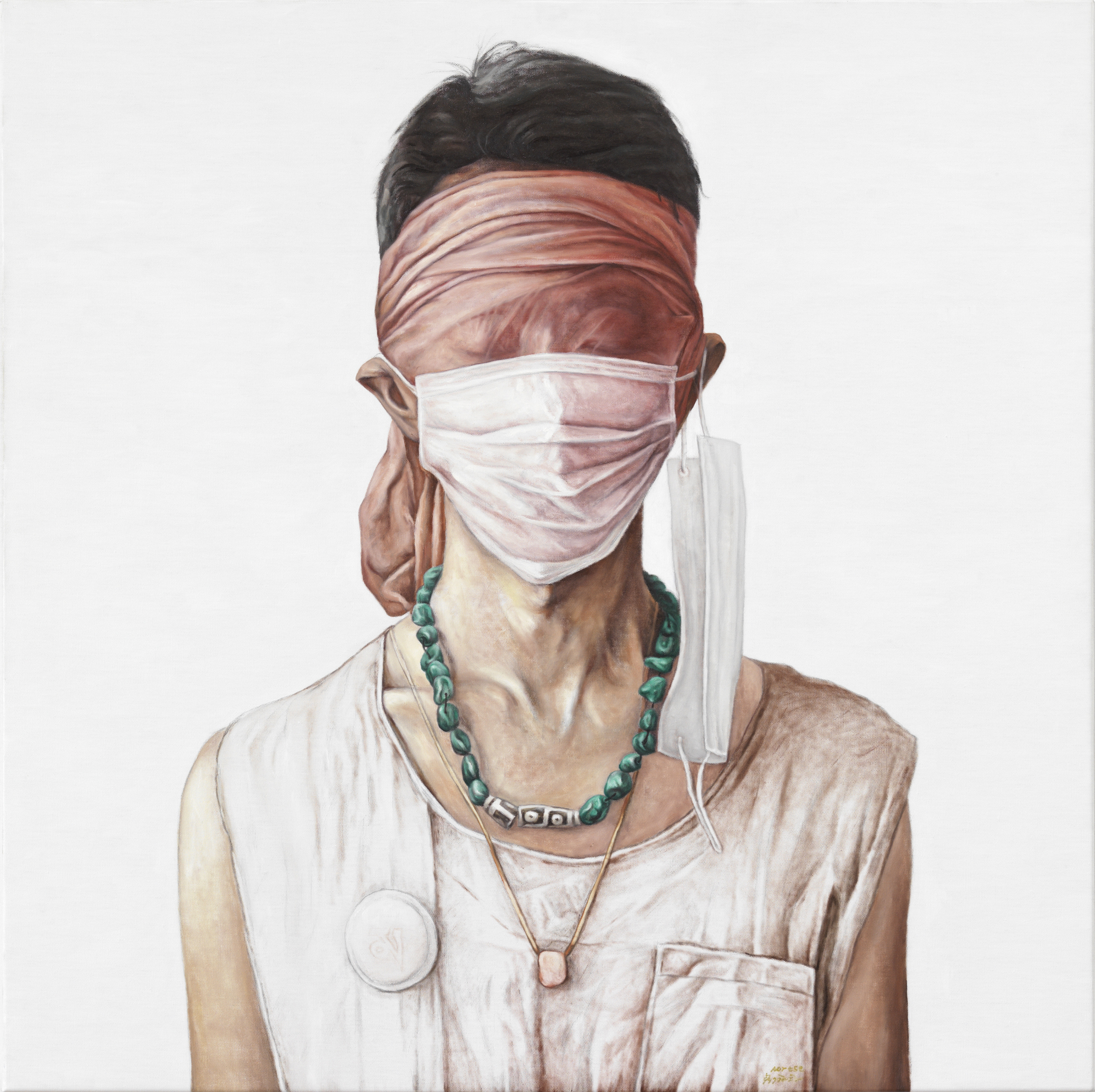"PARALLEL REALITIES"
CONTEMPORARY TIBETAN ART
Group exhibition at ARNDT Berlin in collaboration with Rossi & Rossi
Curated by Tsherin Sherpa
October 26, 2014 – January 28, 2015
Opening | Sunday| October 26, 2014 3 - 6 pm
Accompanied by a talk of David Elliott with the artists at 4 pm
The exhibit "Parallel Realities - CONTEMPORARY TIBETAN ART" places side by side the work of five contemporary Tibetan artists Kesang Lamdark, Tenzing Rigdol, Tsherin Sherpa, Gade, Nortse.
Curatorial statement by Tsherin Sherpa:
Parallel Realities examines the work of five contemporary Tibetan artists—Kelsang Lamdark, Tenzing Rigdol, Tsherin Sherpa, Gade and Nortse—whose lives and art span the globe, from Tibet to Europe to North America. Each artist addresses his personal relationship to his cultural history and heritage, exploring it through different mediums and from different vantage points. Often, such viewpoints diverge along geopolitical boundaries, which are also the cause of strife and war. Here, however, the juxtapositions present common themes and inheritance, as well as individual searches for meaning in today’s diaspora.
Artistic Lineages
Before 1959, the techniques required for the creation of traditional Tibetan art were handed down from master to apprentice, and many of these artistic lineages can be traced through several generations of the same family. Art objects such as thangkas were commissioned for use in Buddhist meditation, and their ritual function required that the images depicted on them—deities, lineage masters or cosmology—adhered to precise and complex iconographic rules specified in ancient scriptures known as sadhanas. If an artist deviated from these exacting specifications, then the painting or sculpture would no longer be valid for use in religious rituals. However, even though Tibet was always an insular country, over generations, influence from neighbouring countries such as China, Nepal and India can be seen in the styles and ornamental backgrounds of paintings and sculptures. Apart from these details, though, artists had limited creative license, for differentiation from the norm would destroy the purpose and function of the art object.
The invasion of Tibet in 1959 and its aftermath facilitated the spread of Tibetan people into neighbouring countries such as Nepal and India. Tibetan craftsmen now living in these countries tried to continue their heritage, but instead found themselves in an environment that did not have the same monastic diversity to act as their patrons. Artists therefore had to compete for commissions from many Buddhist sects outside their family’s lineage, which required them to adapt to iconography prescribed by the different sadhanas of these other sects, making it much more difficult to continue to make a living. Around this time, however, artists also began to witness a subtle loosening of creative constraints, as different types of commissions started to appear; for example, works of art with Indian figures such as Gandhi portrayed in places typically reserved for Buddhist masters.
As the 1960s progressed, spiritual tourists traveled to these Himalayan countries, seeking authentic religious teachings and experiences that they could not find in the West. This new audience’s exposure to thangkas initiated a brisk trade in which the paintings were sought for their psychedelic beauty, rather than their prescribed ritual usage. Since these new buyers could not tell what was missing, factories sprang up to meet a demand that didn’t require the exacting iconography of traditional patrons. In turn, this made it even more challenging for traditional craftsmen, who would spend months working on a single painting, to garner recognition when factory-made thangkas were quick and cheap to produce.
The transition of traditional Buddhist iconography into mainstream pop culture and the oversaturation of such imagery made it less desirable for the younger generation to pick up the traditional trade. Once revered as a position of stature in the village, the artist was now often looked down upon by his peers for creating what had come to be seen as a lower-class craft. At the same time, because of the global demand for their art, many thangka artists began seeing their medium as a stepping-stone for moving further abroad where the practice was more appreciated, at least commercially.
A Creative Explosion
The artists of this generation started to observe their current visual landscape, mixing it with the only artistic training they knew—that of the Buddha. A creative explosion occurred when these artists delved into what it meant for them to be Tibetan in today’s world. Influences of Hollywood, Bollywood, world events, politics, cartoons and TV shows infiltrated their work. Some artists also attended Western art schools, which led them to mix the histories and techniques of the artists they were studying with their own style. With his disintegration and reinterpretation of high and low art, Andy Warhol especially helped to pave the way for such a mixture of cultural references. This melding of West and East gave each artist a different lens and a different vantage point from which they could observe their heritage. Today, some are far removed from Tibet, having never stepped foot on its soil, while others have visited the land and viscerally felt the immediacy of its people’s needs. The Tibetan people’s spirit begins to rise out of the ashes of these old ways.
Although a great deal of Tibetan art developed overseas in this way, some artists never left their homeland; instead, they found themselves working within the restraints of an occupied country. As part of reintegration, many artists received their training at Chinese art schools: some use this language in their work while others outright reject it. Even though Tibetan artists living outside of Tibet do not have much direct communication with those working within the land, a form of dialogue still occurs by their exposure to the others’ work. The Internet has proven to be a key tool in this exchange: without words, a sort of mirror reflection and understanding has begun to occur.
Tibet acts as the focal point for this exhibit, but how it is seen varies according to each individual artist’s personal reality. Tibet itself exists in different realities—seen as both part of China and as something completely separate from it—and continues to be perceived as both a mythological and spiritual Shangri-la, as well as an occupied and rapidly industrialised country. Emerging from Tibet’s history, these divergent pathways have led to so many unique perspectives, and continue to inspire the search for its people’s sense of spirit and home.
Please click here to view the exhibited works with descriptions.
ARNDT Berlin
Potsdamer Strasse 96
10785 Berlin
info@arndtberlin.com






